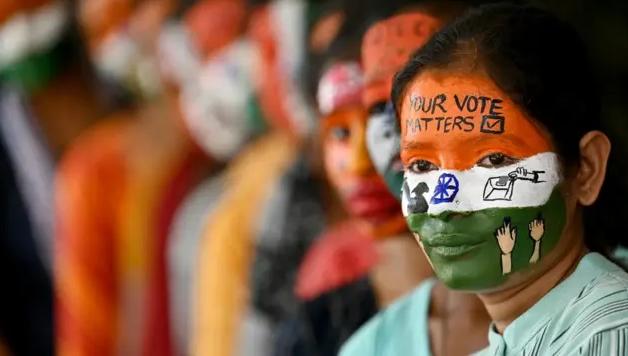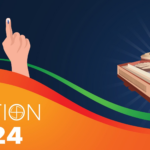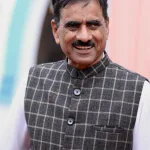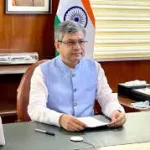The dance of democracy is never-ending, and each step must be carefully considered to ensure a harmonious future for all
The grand spectacle of democracy has concluded, and the voice of the people has echoed through the open ballots. The National Democratic Alliance (NDA), with its ambitious rallying cry of “Ab ki baar 400 paar,” has fallen short of its lofty goal. Despite this, it has secured enough seats to comfortably form the new government. The alliances with Nitish Kumar and Chandrababu Naidu, both crucial components of the grand 400 target, now find themselves in a position to leverage their support for a greater share of power, given the principal party’s lack of an outright majority. Yet, what stands out is that, for only the third time in the brief history of independent India, a leader has been given a mandate to return as Prime Minister for a third consecutive term.
The pivotal state of Uttar Pradesh (UP) has once again demonstrated its profound influence on the political landscape of India. In this election, the state’s outcome proved to be a significant stumbling block for the National Democratic Alliance (NDA). Despite the NDA’s gains in other regions, these successes were insufficient to compensate for the setbacks encountered in UP, underscoring the state’s critical importance in the realm of national politics. The Bharatiya Janata Party (BJP)’s response to these results will undoubtedly be a defining moment in its political strategy. Will the party choose to retreat to its ideological roots, or will it continue its relentless pursuit of electoral victories, regardless of the cost? Several observations arise from the outcome of this election, each illuminating different facets of this political conundrum.
In light of these results, the BJP finds itself at a crossroads. The party’s meteoric rise to power was fueled by a combination of its ideological stance and its ability to project itself as a harbinger of development and change. However, the setbacks in Uttar Pradesh call into question the sustainability of this dual strategy. The BJP must now decide whether to recommit to its ideological foundations—emphasizing its core principles of nationalism, cultural identity, and social conservatism—or to continue its aggressive campaign tactics designed to secure electoral victories at any cost. This choice will not only shape the party’s future but also the trajectory of Indian politics as a whole.
Moreover, the election results in UP highlight the evolving dynamics of voter behavior. The electorate is increasingly discerning, weighing the tangible impacts of governance over mere rhetoric. Promises of development must translate into real, visible progress. The NDA’s performance in UP suggests a potential disconnect between the party’s campaign narratives and the lived experiences of the voters. Addressing this disconnect will be crucial for the BJP if it hopes to regain its foothold in the state and maintain its influence on the national stage.
The Myth of the Hindu Vote Bank: While the BJP enjoys a steadfast 33% vote bank, the idea of a monolithic Hindu vote bank is a myth. Votes are often cast based on religious sub-identities rather than a unified Hindu identity, as evidenced by the loss in Faizabad. The urban, deracinated Hindu voter—whom a friend aptly called Peripheral Hindus—complicates the notion of Hinduism as a unifying electoral strategy. The diversity within Hindu voters means that a singular Hindu calling card is insufficient for a sweeping victory.
Rural distress and economic issues have taken precedence over religious mobilization, particularly among Hindu voters. The electorate’s concerns are more grounded in tangible issues like employment, agriculture, and infrastructure rather than abstract religious sentiments. Religious appeals (dharam) cannot substitute for the basic necessities of life—electricity (bijli), roads (sadak), and water (pani). The electorate’s demand for development over rhetoric is clear and compelling.
The electorate is disillusioned by promises unfulfilled, particularly on corruption. If the BJP does not align its actions with its anti-corruption rhetoric, this could well be its final term in power. Criticism must be embraced as a tool for improvement, not silenced. Creating echo chambers leads to self-deception and grandiosity, alienating the leadership from ground realities.
The slogan “Sabka Saath, Sabka Vikas” (Together with all, development for all) is noble, but it does not guarantee reciprocation from all communities. The party must navigate the complex social fabric with genuine inclusivity. There is a growing weariness among the populace towards grand speeches and unrelatable assurances. A visit to places like Gurgaon reveals the stark contrast between rhetoric and reality. The electorate demands concrete actions over eloquent “Mann ki Baat” broadcasts.
The recent elections have underscored the significant electoral influence of Muslims in India. Their ability to vote en masse for a particular party, especially in a first-past-the-post system, means that fracturing the majority vote along caste lines can lead to a decisive victory. The opposition has evidently learned this lesson from previous assembly defeats, particularly in UP.
The electoral map’s new contours will inevitably shape the NDA’s strategy moving forward. The alliance partners, now wielding greater leverage, may push for a larger share of the governmental pie. Nitish Kumar and Chandrababu Naidu, seasoned politicians both, will likely capitalize on this moment to negotiate favorable terms for their states and themselves. Their support is now more critical than ever to the NDA’s stability.
Reflecting on the broader political landscape, the BJP must grapple with several fundamental questions. The party’s ideological core and its practical governance must align more closely if it is to sustain its political dominance. The tension between ideological purity and pragmatic governance is palpable. The party’s core supporters demand adherence to the Hindutva ideology, while a broader swath of the electorate seeks effective governance and economic development.
The BJP’s future hinges on its ability to balance these competing demands. Will it double down on its ideological commitments, risking alienation of the broader electorate, or will it adapt to the pragmatic needs of governance, potentially diluting its ideological stance? The answer will shape India’s political trajectory in the coming years.
In conclusion, the recent election results offer a nuanced picture of Indian democracy. The NDA’s victory, while significant, falls short of its grand ambitions. The electorate’s message is clear: governance, economic development, and inclusivity are paramount. The BJP must heed this message if it is to remain relevant and effective in the evolving political landscape. The dance of democracy is never-ending, and each step must be carefully considered to ensure a harmonious future for all.
(Author is a columnist and can be reached at: [email protected])








